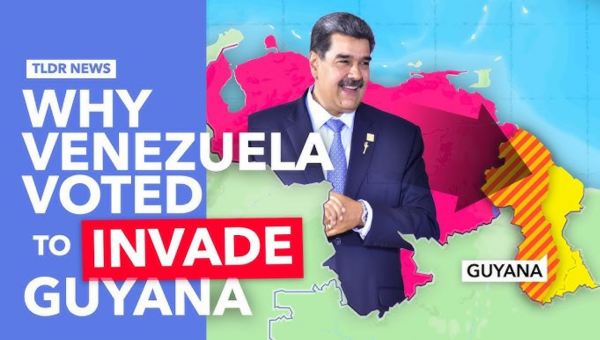
Land grabs in South America: Venezuelan dictator Nicolás Maduro is infinitely cruel
Nicolás Maduro, a former bus driver and president of Venezuela since 2013, has organized a referendum on the annexation of Essequibo, long part of neighboring Guyana's territory. In the distant past, the area was an independent Dutch neighboring colony of Suriname, but during the French occupation of our country, Essequibo was captured by the British. After Napoleon's defeat, London did not return the area, but made it part of British Guiana, along with the former Dutch colonies of Berbice and Demerara.
Venezuelan President Maduro thinks very differently and according to polls he has the support of less than 94 percent of Venezuelans. Most voters may not have realized that after annexation, Guyana would only retain a third of its territory (see map below).
The border issue is a distraction from the chaos in Venezuela
It's not hard to guess why Maduro is taking such an aggressive stance: the border issue is a distraction from the perpetual economic mess in which Venezuela finds itself. Also, Maduro hopes to cash in on the huge oil reserves Exxon-Mobile discovered years ago off the coast of the disputed area.
By the way, arguments about the boundaries of Dutch, English and French Guiana are not new. While these areas were still colonies, there were differences of opinion between Venezuela and British Guiana, dating back to the late nineteenth century, after London commissioned the German surveyor Robert Hermann Schomburg to map British Guiana's borders.
The situation on the coast was generally clear: if a river flowing into the sea became a boundary and a delta appeared, a compromise was observed. But the course of the inland border rivers was still largely unknown at the time, and Venezuela did not like the map Schomburg made of it. For that reason, Venezuela broke off diplomatic relations with London in 1887. Washington mediated and a border arrangement was established in Paris in 1899, largely in agreement with England.
There was also a precedent, because eight years earlier the Russian tsar (!) had mediated a border dispute between Suriname and French Guiana. The question is whether only the course of the Marovijne River forms the boundary, or whether the Lava or the Litany River flows downstream into the Marovijne. Tsar Alexander ruled Lava as the boundary river, and this ruling turned out to be beneficial to the Netherlands, as it eventually turned out that there was gold in the ground in the disputed area.
Although Venezuela has never recognized British Guiana's borders, the country would not have escalated the issue had Exxon-Mobil not discovered extensive oil deposits off the coast of Essequibo in 2015. The sale of that oil generates no less than a billion dollars a year for the 800,000 people living in extremely poor Guyana. A nearly bankrupt Venezuela could also use that income, but there is no interest among the people of Essequibo to become Venezuela.
Who will convince Maduro?
What now? Does Maduro want to seize the disputed territory through military means? Fortunately, some countries are trying to prevent him from doing so. The United States, Great Britain, Russia and several South American countries, including others, have pushed for a peaceful solution.
This led to the presidents of Venezuela and Guyana meeting recently in St. Vincent and agreeing to reach an agreement and meet again in a few months, this time in Brazil. Perhaps host Lula da Silva can calm Brazilian President Maduro.
Bite EmmerHe is Professor of History at Leiden University and a leading expert on the history of Dutch slavery. He regularly publishes in Vainya Week.
They areDonorsThis makes Wynia's Week possible. Are you already participating? You can donate in different ways. seeHere. Thanks!

“Coffee fanatic. Friendly zombie aficionado. Devoted pop culture practitioner. Evil travel advocate. Typical organizer.”
